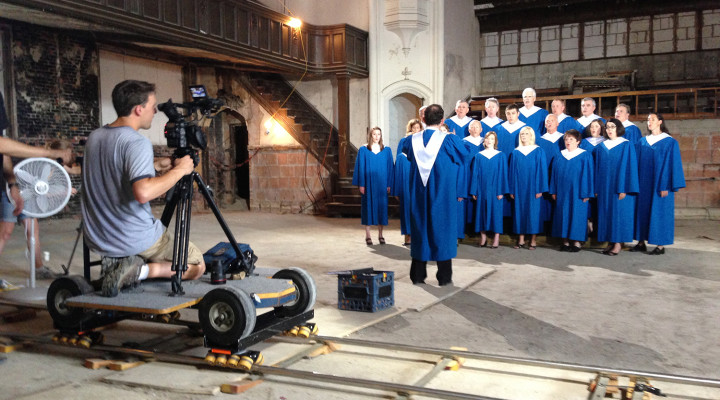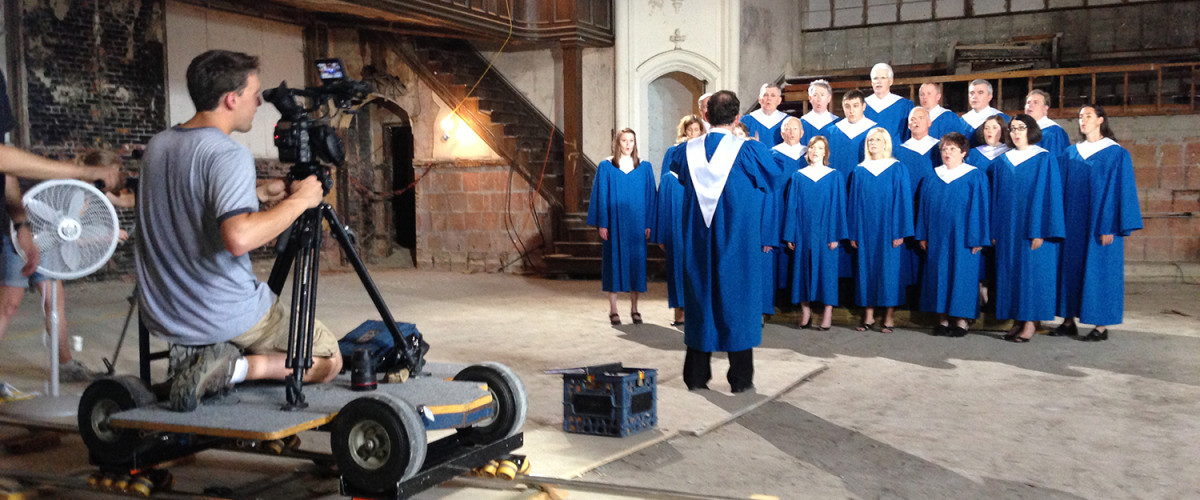Church consultants have been saying it so long they almost sound like a broken record: congregations are closing at appalling rates and most are too afraid to face it.
That’s certainly nothing new to congregational coaches like Eddie Hammett, president of North Carolina-based Transforming Solutions.
“I’ve been saying that for 20 years,” he said.
But Hammett and many others are hailing the film When God Left the Building: The Exodus of America’s Faithful and What’s Next.
Hammett said the documentary may help American churches emerge from denial and ignorance by translating decades of verbal and written warnings into images Christians can understand.
“We are in a visual-driven age,” he said.
The film is an often brutal look into the social and religious forces driving the steady decline of the American church.
Thom Schultz, the director, shared about the film and positive and negative trends that inspired it during The Columbia Partnership’s FaithSoaring Churches Learning Community telephone session on March 31.

Director Thom Schultz directs a shoot at Kodak headquarters in New York. (Photo/courtesy of Thom Schultz).
A Kodak moment
Schultz was invited to speak because the film – and his book Why Nobody Wants to Go to Church Anymore – already have churches and church leaders talking around the country, said Ken Kessler, the call moderator.
The film and book provide “churches the opportunity to think carefully about the choices they face in this American culture,” said Kessler, who is the coaching network director for the Baptist General Association of Virginia.
Kessler pointed to a section in the film focusing on Kodak, and how it famously ignored the onset of digital photography and remained a film company.
“And while digital photography flourished, Kodak went bankrupt,” Kessler said in an email to Baptist News Global.
The Kodak example is included as a warning to churches who may be tempted to ignore innovations in the way they can present the gospel to their communities and to the world, Kessler said.
The film presents two churches who are confronted with those choices, and the different approaches they take. It also offers church leaders an opportunity to “participate in the emotional struggle of ignoring cultural shifts and trends,” Kessler said.
Culture’s view of the church
And far too many American churches are choosing to ignore those social changes, Schultz said during the call.
Some 4,000 congregations shut down annually compared to an estimated 3,000 church starts every year, he said. Even most of those new churches close after two years.
With about 80 percent of American churches in decline, the remaining 20 percent that are stable or growing cannot make up for the losses, said Schultz, the founder of Group Publishing and Lifetree Cafe.
“So the bottom line is we are not backfilling as quickly as the decline rate,” he said.
A large part of the problem is that many churches use a 19th and 20th century model of church, which is promotes a membership-based organization concerned with itself, Schultz said.
They also focus “primarily on this one hour on Sunday morning that has become a stage for presentations by professionals at the microphone,” he said. “People are expected to come and be passive spectators – that is what the culture views as the church.”
‘No silver bullet’
When God Left the Building depicts the struggles different congregations face, including internally, as they face decline and – sometimes – face it squarely. Witnessing that is meant to inspire viewers to do the same, Schultz said.
It pushes congregations to adapt their methodologies in order to connect with people today, he said.
“We have to go back to defining what is church,” Schultz said. “It is healthy for us to stop and question…what the church is and what we believe will carry into the future.”
But he warned there can be push back when viewing and discussing the documentary. It even happens in film when a church member starts a ministry in local bars and coffee shops.
“That caused controversy in the congregation to think about having a ministry in a pub,” Schultz said.
There has been some concern about the film itself, he added. He’s heard from church leaders who said they do not want members of their congregations to see it, afraid it will scare them.
Others said they are concerned church members may be inspired to undermine pastoral authority if they see the movie.
“’What if my congregation rises up against me?’” Schultz said.
But most have responded by saying it’s been a great way to inspire their congregations to take seriously the need for change, he said. Many of them have obtained the licensed version of the film, which comes with a discussion guide for churches.
What the film does not do, he added, is provide specific solutions.
“The film is not prescriptive,” he said. “It raises a lot of questions for your congregation to grapple with, but there is no one answer, no silver bullet.”




